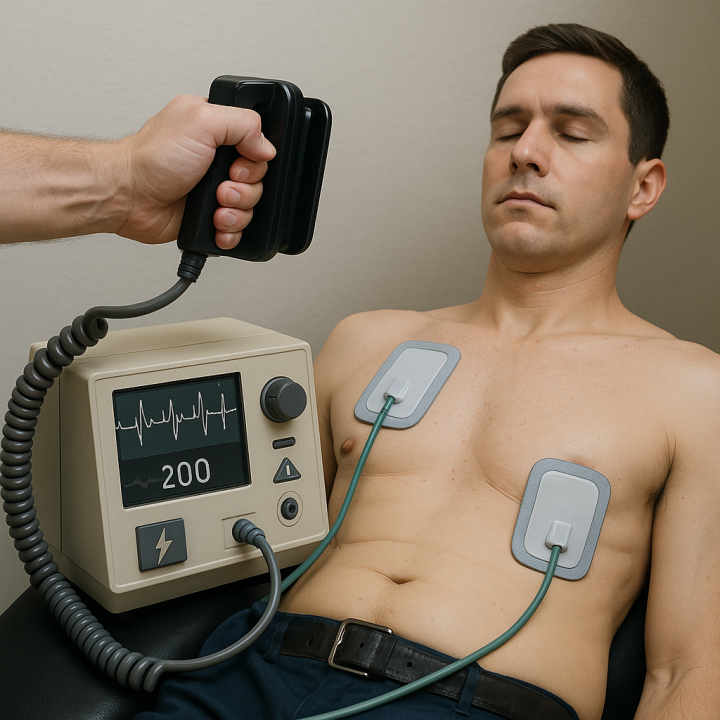When a cardiac arrest occurs, every second counts. Among the most powerful interventions is early defibrillation, which can mean the difference between life and death. But what makes it so effective—and why is time such a critical factor?
⚡ What Is Defibrillation?
Defibrillation is the process of delivering a controlled electric shock to the heart. This shock interrupts abnormal, uncoordinated electrical activity (often ventricular fibrillation or pulseless ventricular tachycardia) and gives the heart a chance to reset and beat normally again.
⏱️ Why Early Defibrillation Saves Lives
- Chance of Survival Drops by 7–10% Per Minute
With each minute of delay in defibrillation, the chance of survival decreases drastically. If defibrillation is delivered within the first 2–3 minutes, survival rates can be as high as 70%. - Restoring Electrical Activity Quickly
The sooner the shock is given, the more likely the heart will respond. After 10 minutes, the heart muscle begins to deteriorate rapidly, and chances of successful resuscitation drop significantly.
🔬 What the Science Says
- Ventricular Fibrillation (VF) is the most common rhythm in sudden cardiac arrest.
- Defibrillators (AEDs) work by depolarizing the heart muscle, stopping VF, and allowing the sinus node to regain control.
- Studies show that for every minute defibrillation is delayed, mortality increases—early AED use is a game-changer.
🧰 Real-World Use: AEDs in Public Spaces
Modern Automated External Defibrillators (AEDs) are designed to be used by anyone—even those with no medical training. AEDs:
- Analyze heart rhythm
- Determine if a shock is needed
- Coach users through CPR and shock delivery
Their presence in airports, malls, gyms, and schools has already saved thousands of lives.
👨⚕️ ACLS & Early Defibrillation
In ACLS (Advanced Cardiovascular Life Support), early defibrillation is integrated with high-quality CPR, airway management, and medication. Recognizing shockable rhythms quickly and acting fast is a core skill for healthcare professionals.
💡 Final Thoughts
Early defibrillation is one of the most effective ways to improve survival in cardiac arrest. Whether you’re a layperson or a healthcare provider, knowing how—and when—to use an AED can save lives. The science is clear: the earlier the shock, the better the outcome.


